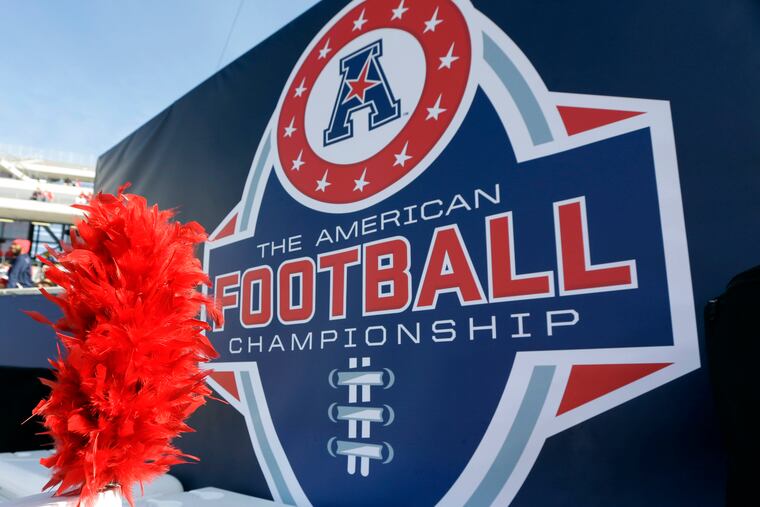American Athletic Conference formally announces addition of six schools
UAB, Texas-San Antonio, Rice, North Texas, Charlotte, and Florida Atlantic are joining Temple's league, after Cincinnati, Houston, and Central Florida left for the Big 12.

The American Athletic Conference is adding UAB, Texas-San Antonio, Rice, North Texas, Charlotte and Florida Atlantic to the league, replacing three schools that are leaving for the Big 12 Conference and growing to 14 teams.
The AAC, which includes Temple, announced the additions Thursday, a move that it hopes will stabilize the conference in the short term and allow it to withstand future poaching of its members by wealthier leagues.
The conference said when exactly the new members join is still to be determined.
“This is a strategic expansion that accomplishes a number of goals as we take the conference into its second decade. We are adding excellent institutions that are established in major cities and have invested in competing at the highest level,” AAC Commissioner Mike Aresco said in a statement.
The American, formerly the Big East, has been a feeder conference from Power Five leagues for nearly two decades. Most recently, the Big 12 announced the additions of AAC powers Cincinnati, Houston and Central Florida to replace Southeastern Conference-bound Oklahoma and Texas.
The Sooners and Longhorns have said they will join the SEC in 2025, but a quicker departure is possible.
The Big 12 has said it is targeting 2023 for the arrival of its new members, which also includes BYU.
The AAC’s move strips Conference USA of six schools, leaving that league both searching for new members and trying to fend off other poachers. The Sun Belt has said it is interested in expanding beyond its current 10 football members and some of C-USA’s remaining eight schools would be geographic fits.
The American was born in 2013 from the downfall of Big East football, rebuilding around mostly C-USA schools. The AAC emerged as the strongest of the so-called Group of Five conferences when it comes to football during the College Football Playoff era. Five times in seven season, the American has earned the New Year’s Six bowl spot that goes to the highest ranked G5 conference champion.
But four of those championships were won by the schools now heading to the Big 12.
The AAC targeted schools located in big media markets and fertile recruiting territory, hoping that with better exposure and more revenue, they could develop into the next UCF.
The six new schools will join AAC holdovers East Carolina, Memphis, Navy (football only), South Florida, SMU, Temple, Tulane, Tulsa and Wichita State (which does not compete in football). The additions will give the American four members in Texas. The league office recently relocated to the Dallas area after being headquartered in Providence, Rhode Island.
“We have enhanced geographical concentration, which will especially help the conference’s men’s and women’s basketball and Olympic sports teams,” Aresco said. “And we will continue to provide valuable inventory to our major media rights partner, ESPN, which will feature our members on the most prominent platforms in sports media.”
The AAC is at the front end of a 10-year deal with ESPN that will pay the conference’s schools between $7 million and $8 million per year over the length of the contract. It is unclear whether the value of the deal will be impacted by the change in membership, but the contract makes the conference the wealthiest in major college football outside the Power Five.
Conference USA has floundered in recent seasons by comparison, with TV deals that have generated well under $1 million per year per school and made the league’s games tricky for its fans to find.
The most recent deal provides more consistency with CBS Sports Network as the primary cable TV home of C-USA’s games and some streaming on ESPN+.